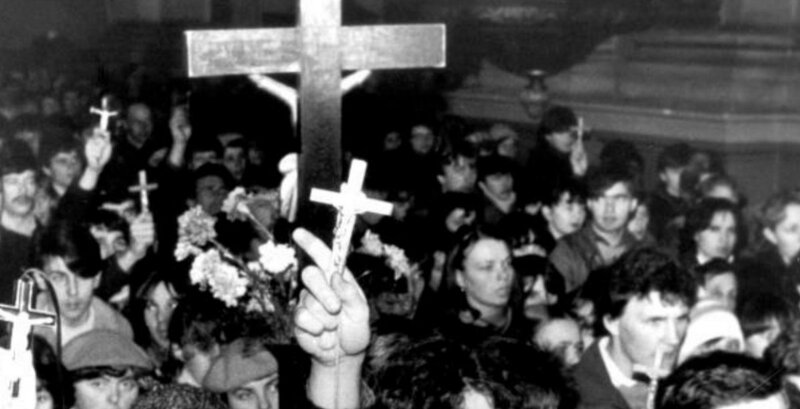
The general perception of the history of the Catholic Church during the Communist era is usually dominated by the institutional and political perspectives. The main attention gather the stories of the church’s hierarchy fighting against the totalitarian authorities, the fate of the diocese and chapter priests and the political involvement of the faithful. However, what remains somewhat out of the spotlight, are the activities of the countless secular Catholics who spontaneously and eagerly stood in defence of the Church, their faith and the broadly understood religious freedom.
One of the areas of conflict between the Church and the state, where the secular Catholics played an important role, was the presence of religion and religious symbols in schools. Every attempt to remove crosses and religion lessons from educational facilities was met with firm responses from not only the priesthood, but first and foremost from the students and their parents themselves and even teachers.
Bierut’s crusade
The first operation of this type was initiated already in Autumn of 1948, so during the rules of the Stalin administration, with Bolesław Bierut as the leading figure. The testing ground for the fight against religion in schools was the Upper Silesia province. Crosses were moved to the side walls of the classrooms and then – even removed entirely. Among the people who called for the removal of crosses from schools was the Silesian curator – Jerzy Berek, a protestant who suggested that „the image of the Crucified awakens bloodthirsty instincts”. The state policies were met with counteractions – the youth hanged crosses back on or „drew or carved crosses on walls” (as the Katowice bishop Stanisław Adamski wrote in his pastoral letter in 1949). In classrooms, were crosses were moved to the sidewalls, the youth often turned their tables towards them; there were also instances of students leaving the school in protest. In the Żore high school, young pupils hanged a cross every day, which would disappear after the lessons. The Communist authorities noted many „incidents related to moving crosses”. The fight about the crosses, according to the Katowice curia, lasted several weeks and „stopped only after the threats of the highest punishments were made, and in some cases even carried out” (that’s what happened e.g. in Panewniki, Chorzów, Szopienice and Piekary). The protesters were threatened with the Citizens’ Militia intervention (in Józefowo) or the Security Office’s (e.g. in Cieszyn and Nakla), with imprisonment (in Kamień) and the complete removal of crosses (in Tarnowskie Góry, Radostowy, Repty and Cieszyn), also with expelling from school (e.g. in Rybnik and Pszczyn).